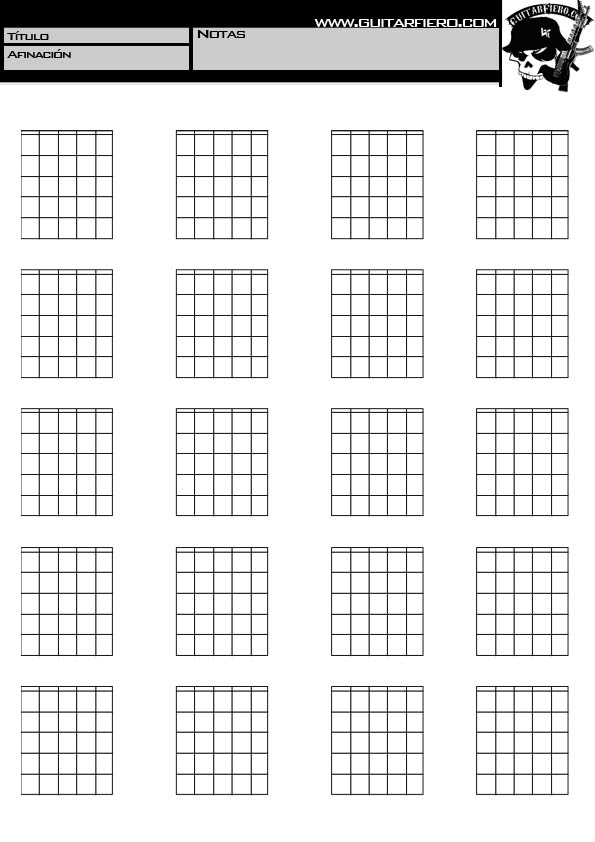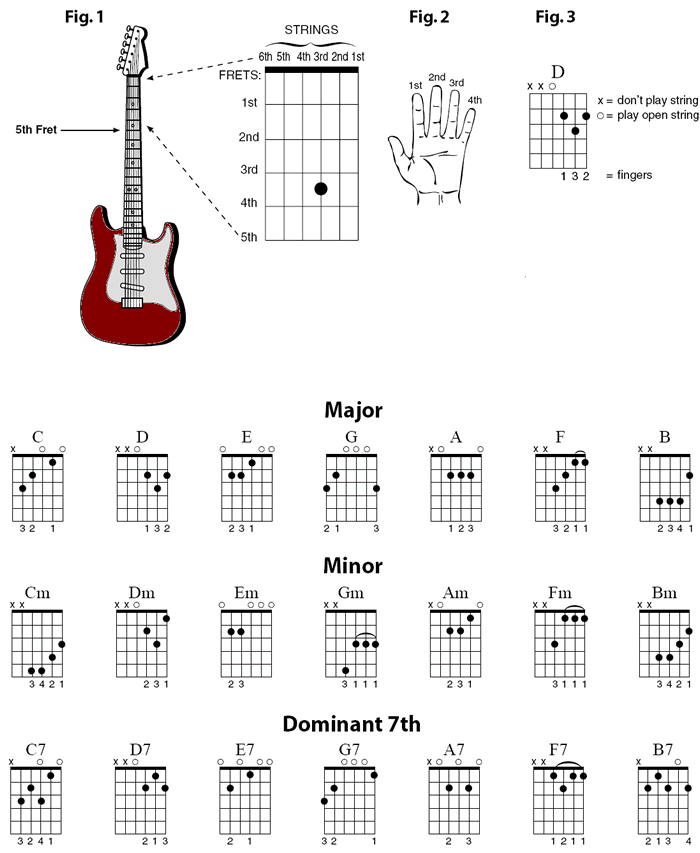Unlocking the Fretboard: Your Guide to Guitar Chord Diagrams
Imagine picking up your guitar, a melody forming in your mind, and your fingers effortlessly translating those musical ideas onto the fretboard. For many aspiring guitarists, this seamless transition from thought to music can feel like a distant dream. One powerful tool, however, can bridge this gap: the humble guitar chord diagram.
These visual representations of the guitar neck, often depicted as grids with dots and lines, hold the key to unlocking a vast vocabulary of chords. But their true potential lies in their blank canvases, inviting you to explore, experiment, and create your own musical language.
Blank guitar chord diagrams, sometimes referred to as chord templates or charts, provide a framework for understanding how chords are constructed. Each vertical line on the diagram represents a string on your guitar, while the horizontal lines denote the frets. Dots placed on the grid indicate which frets to press down with your fingers to form specific chords. The beauty of blank diagrams lies in their flexibility – they become your personal musical sketchpad.
The history of these diagrams can be traced back to the earliest forms of musical notation, evolving alongside the guitar itself. As the instrument gained popularity and players sought ways to share chord voicings, these visual aids emerged as an effective method. Their simplicity and universality transcend language barriers, allowing guitarists worldwide to communicate and learn from one another.
However, despite their apparent simplicity, blank guitar chord diagrams can present challenges, particularly for beginners. Understanding the relationship between the diagram and the physical fretboard, deciphering finger placement, and transitioning between chords smoothly require practice and patience. This is where the true learning begins – the process of translating these abstract symbols into harmonious sounds.
One of the most significant benefits of working with blank guitar chord diagrams is the development of your musical ear. As you experiment with different finger positions and listen attentively to the resulting chords, you begin to internalize the relationships between notes and develop a deeper understanding of harmony.
Furthermore, blank diagrams empower you to become an active participant in your musical journey. Rather than simply memorizing pre-existing chord shapes, you're encouraged to explore the fretboard, discover alternative voicings, and even invent your own unique chords.
This exploration and discovery process fosters creativity and can lead to breakthroughs in your songwriting and improvisation skills. Blank diagrams become springboards for new musical ideas, allowing you to break free from limitations and unlock the full expressive potential of the guitar.
Advantages and Disadvantages of Blank Guitar Chord Diagrams
| Advantages | Disadvantages |
|---|---|
| Develops your musical ear | Can be initially challenging for beginners |
| Encourages exploration and creativity | Requires practice and patience to master |
| Improves understanding of chord construction | May not always reflect the nuances of different strumming patterns or fingerpicking techniques |
Whether you're a novice guitarist just beginning your musical exploration or a seasoned player seeking new avenues for creative expression, embracing the power of blank guitar chord diagrams can be a game-changer. They offer a pathway to deepen your understanding of the instrument, unlock your musical potential, and embark on a lifelong journey of learning and discovery.
The alluring gaze decoding the mystery of a cat looking into camera
Unlocking the world of yandere couple matching profile pictures
Brewing rewards unlocking the perks of the starbucks rewards visa card














